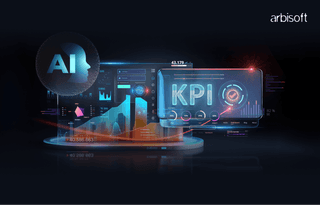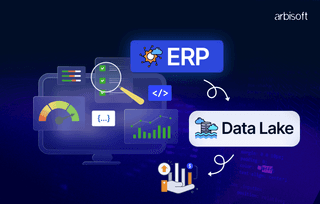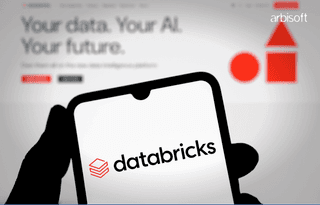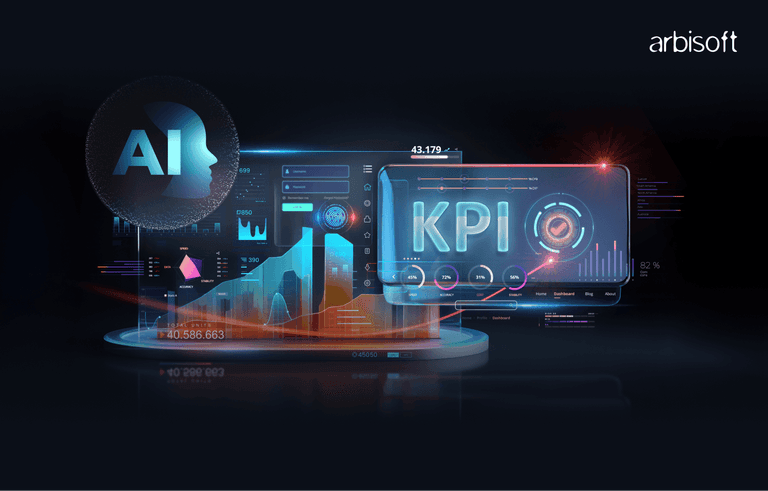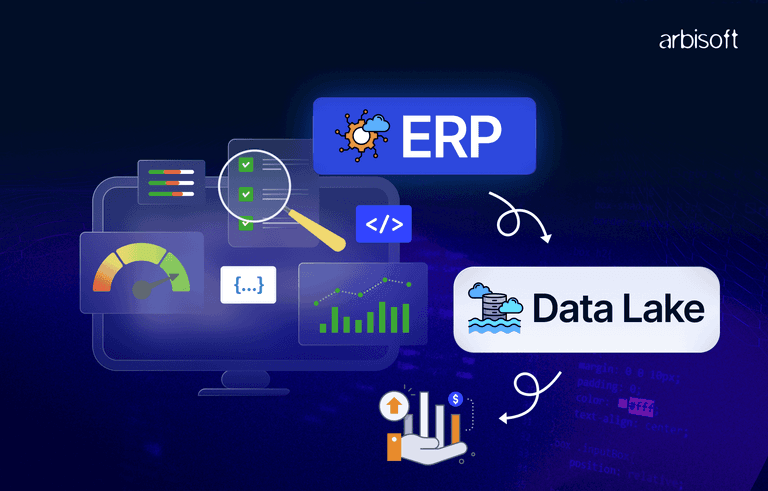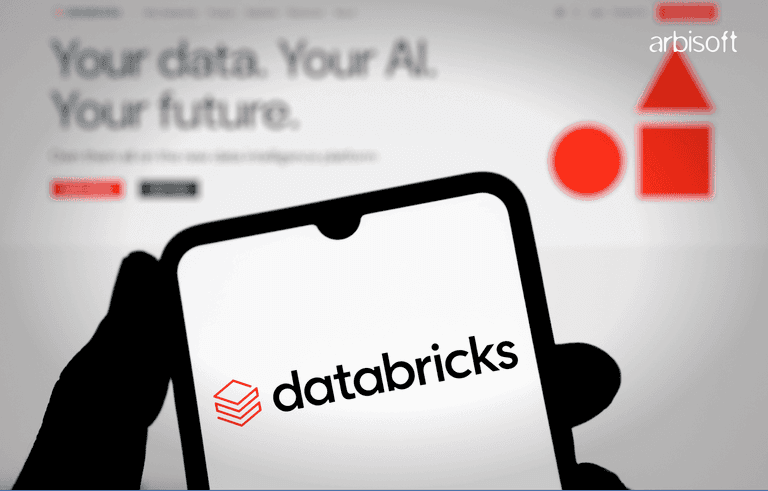We put excellence, value and quality above all - and it shows




A Technology Partnership That Goes Beyond Code

“Arbisoft has been my most trusted technology partner for now over 15 years. Arbisoft has very unique methods of recruiting and training, and the results demonstrate that. They have great teams, great positive attitudes and great communication.”
Data Lake vs. Data Lakehouse vs. Data Warehouse: Which One Fits Your Business Needs?

Ever had trouble finding your favorite t-shirt in a messy closet? You could've sworn you tossed it in there somewhere! If only the closet were better organized, it would be so much easier to find what you need, right when you need it.
What you're experiencing is a very basic version of a data swamp - an unorganized and cluttered storage of data that makes it harder for data scientists, engineers, and business analysts to access crucial information needed to make vital decisions.
Thankfully, there is a solution. Several solutions, actually. Data lakes, data warehouses, and data lakehouses are all ways to organize data so that the right people can find it easily. A way to better organize your closet, if you will. But what are the differences between these solutions, and which one is best for your business needs? Let's find out.
Avoid the top 10 most common mistakes in data storage and management.

Grab our cheat sheet and avoid these pitfalls to power up your data strategy!

What Is a Data Warehouse?
A data warehouse is like a highly organized library for data. Imagine a massive storage facility where information is carefully categorized into clear, well-defined sections, making it easy to find and analyze. This centralized system is specifically designed to handle structured data, which means data that is neatly organized into tables and columns.
In a data warehouse, SQL - Structured Query Language is often used to run queries, enabling users to extract and analyze information efficiently. This well-structured approach helps maintain high data quality and ensures that users can easily interact with the data without dealing with clutter or inconsistency.
One of the key advantages of a data warehouse is that it provides an all-in-one solution for managing data. This means that storage, computing, and metadata (information about the data) are all handled by a single provider, simplifying the overall data management process. Leading platforms in this space include Amazon Redshift, Google BigQuery, and Snowflake, each offering robust features to handle large volumes of data.
Data warehouses are particularly beneficial for teams focused on structured data analysis. They are ideal for generating reports, implementing business intelligence solutions, and making data-driven decisions. By organizing data efficiently and offering powerful analytical tools, data warehouses support effective decision-making and strategic planning.
What Is a Data Lake?
A data lake is like a vast, open reservoir for data, accommodating both structured and unstructured information gathered through data scraping services. Unlike data warehouses, which organize data into neat tables and columns, data lakes can store data in its raw, unprocessed form. This flexibility makes data lakes particularly useful for machine learning, data science, and real-time streaming.
In the past, setting up a data lake could be complex and resource-intensive. However, modern platforms like Databricks, Snowflake, and Dremio have introduced managed services that streamline the process, making it easier to deploy and manage a data lake.
One of the standout features of a data lake is its flexibility. You can choose the best technologies for storing, processing, and managing metadata based on your needs. This is especially valuable for teams working with diverse datasets that require custom handling and analysis. Additionally, the separation of storage and computing in a data lake can lead to cost savings, particularly when dealing with large-scale, real-time data processing.
While data lakes offer immense flexibility, they also demand a certain level of technical expertise to manage effectively. Properly configuring and maintaining a data lake requires a good understanding of data management practices and technologies.
What Is a Data Lakehouse?
A data lakehouse is a hybrid solution that merges the strengths of both data warehouses and data lakes. Think of it as a versatile platform that combines the best features of each, allowing businesses to handle both structured and unstructured data seamlessly.
The data lakehouse integrates the structured analytics capabilities of a data warehouse with the flexibility and machine learning features of a data lake. This means that you can perform high-performance analytics and complex queries on diverse data types, all within a single platform.
Data lakehouses gained prominence as companies like Databricks and Snowflake began incorporating functionalities from both data lakes and data warehouses. For example, they offer SQL capabilities and schema definitions traditionally associated with data warehouses, alongside the storage and processing flexibility of data lakes.
This hybrid approach simplifies data management by providing a unified platform for various data processing needs. It supports diverse analytical tasks and helps organizations leverage the full potential of their data, making it an attractive choice for businesses aiming to enhance their data strategy.
Comparison of Data Lake, Data Lakehouse, and Data Warehouse
When comparing the three, there are several aspects that need to be kept in mind. Let’s take a look at what these are:
1. Architectural Differences
When comparing the architectures of Data Lakes, Data Warehouses, and Data Lakehouses, each serves distinct purposes and structures data differently. Below is a comparison of how they differ in design and structure.
Aspect | Data Lake | Data Warehouse | Data Lakehouse |
| Data Structure | Unstructured, semi-structured, and structured data | Structured data only | Both unstructured, semi-structured, and structured data |
| Schema | Schema-on-read (no schema required upfront) | Schema-on-write (schema defined before data insertion) | Schema-on-write with schema flexibility for raw data |
| Storage Technology | Distributed systems (e.g., Hadoop, Amazon S3) | Relational databases (e.g., Redshift, Snowflake) | Combines distributed storage with transactional support |
2. Performance & Scalability
Performance and scalability are crucial factors when handling large data volumes. Here's how Data Lakes, Data Warehouses, and Data Lakehouses compare in terms of speed and scaling capabilities.
Aspect | Data Lake | Data Warehouse | Data Lakehouse |
| Performance | Slower query performance due to lack of indexing | Optimized for fast queries on structured data | Combines indexing, caching for faster performance |
| Scalability | Highly scalable for storing massive datasets | Scalable but more expensive, especially vertically | Highly scalable with better performance optimizations |
3. Cost Efficiency
Cost is often a deciding factor when choosing between these architectures. Below is a breakdown of the cost implications for storage and operation.
Aspect | Data Lake | Data Warehouse | Data Lakehouse |
| Storage Costs | Low-cost storage for large volumes of data | Higher cost due to specialized infrastructure | More cost-efficient by combining storage and analytics |
| Operational Costs | Low upfront, but performance tuning can increase costs | High, due to ETL processes and maintenance | Lower operational cost with unified architecture |
4. Data Governance & Security
Data governance and security measures differ significantly across these systems. Here’s how they handle data management and security protocols.
Aspect | Data Lake | Data Warehouse | Data Lakehouse |
| Governance | Limited built-in governance, difficult to enforce | Strong governance with well-defined data management | Adds governance layer with ACID transactions |
| Security | Custom security features, often less robust | Built-in security, encryption, and compliance tools | Improves security features over data lake approach |
5. Flexibility in Data Types
The ability to store and manage different data types is a major factor in the choice of system. Here’s how each solution accommodates varying data types.
Aspect | Data Lake | Data Warehouse | Data Lakehouse |
| Data Type Flexibility | Stores structured, semi-structured, and unstructured data | Primarily handles structured data | Stores and processes multiple data types |
| Schema Requirement | No schema required | Schema is predefined | Schema enforcement with flexibility for raw data |
6. AI/ML Integration
For AI and machine learning applications, data architecture plays a key role. Here’s a look at how Data Lakes, Data Warehouses, and Data Lakehouses support AI/ML integration.
Aspect | Data Lake | Data Warehouse | Data Lakehouse |
| AI/ML Readiness | Suitable for AI/ML with large volumes of raw data | Limited to structured data, less suitable for AI/ML | Optimized for AI/ML use cases with both raw and processed data |
Comparing Snowflake and Databricks for Data Management
When deciding between Snowflake and Databricks, it’s essential to evaluate your specific business requirements and data needs:
- Snowflake is a top choice for businesses that rely primarily on structured and semi-structured data and need an optimized platform for business intelligence and real-time reporting. It offers seamless scaling and cost efficiency for workloads that require high-performance SQL querying.
- Databricks, on the other hand, is ideal for companies with unstructured or semi-structured data, especially those involved in machine learning, AI, or streaming data processing. Its lakehouse approach provides flexibility and real-time analytics capabilities, making it a versatile choice for advanced data science and engineering use cases.
Both platforms offer industry-leading solutions, but the choice between them depends on whether your focus is on structured data analytics (Snowflake) or advanced data science with mixed data types (Databricks).
Our detailed blog here compares Databricks and Snowflake in detail.
Conclusion: Choosing the Right Data Solution for Your Business
Whether you opt for a data warehouse like Snowflake, a data lake or a data lakehouse powered by Databricks, the key is understanding your business’s unique data needs and scalability requirements.
Snowflake and Databricks are both highly capable platforms, each excelling in their respective niches. Snowflake provides a powerful solution for businesses focused on structured data and rapid reporting, while Databricks offers a flexible and scalable platform for organizations that need to harness the power of real-time analytics and machine learning.
Understanding the differences between these architectures will empower you to make the best decision for your company’s data management strategy, ensuring that you not only store data efficiently but also extract actionable insights that drive business success. To further enhance your data management strategy, consider leveraging AI and data science services to extract valuable insights from your organized data.








